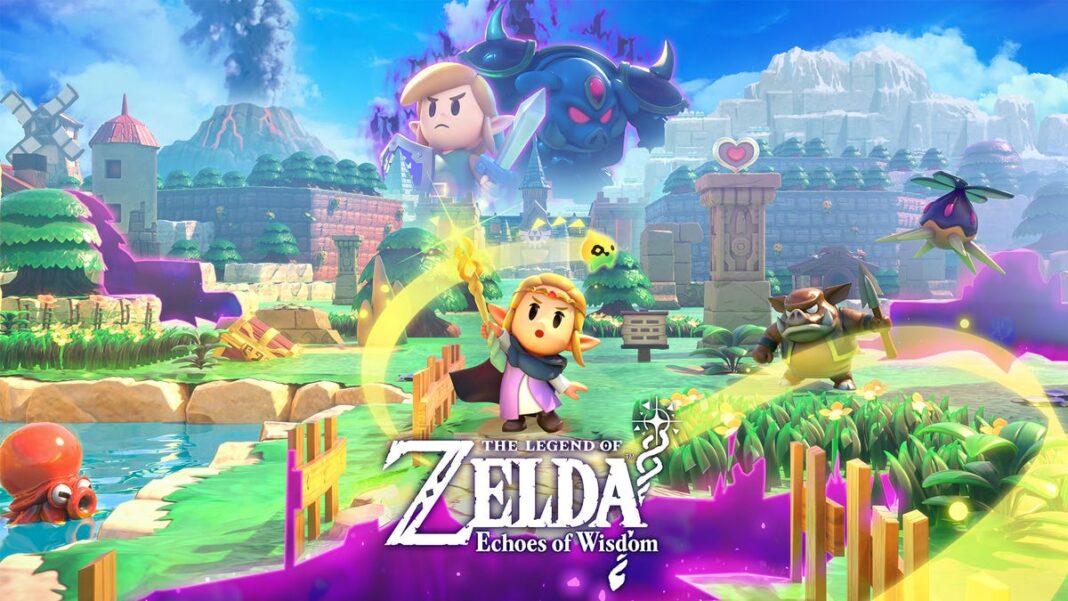Echoes of Wisdom: Developers of Legend of Zelda Discuss Game Themes, Timeline, and Personal Favorites
The latest installment in one of Nintendo’s most enduring franchises kicked off with a remake.
Nintendo’s announcement in June regarding Echoes of Wisdom, the newest entry in the Legend of Zelda series where players can take control of Princess Zelda, caught many fans off guard. However, according to the developers, the project had been in development for a considerable time.
Following the release of the 2019 remake of Link’s Awakening for the Nintendo Switch, developer Grezzo began exploring ideas for a new game, which would be spearheaded by Tomomi Sano, the first female director of the Legend of Zelda series.
“Our goal was to allow players to approach puzzles and challenges in their own unique ways,” Sano shared with YSL News via a translator. “The results were even more diverse than we anticipated, and it has been fascinating to witness these unexpected solutions from players.”
Zelda as the Main Character
<pInitially, Zelda was not meant to be the main character of Echoes of Wisdom, the developers disclosed in Nintendo’s Ask the Developer series. What led to this adjustment?
The shift was driven by the game’s echo system, which allows Zelda to use her Tri rod to create duplicates of objects and enemies. According to Eiji Aonuma, series producer of Legend of Zelda and a senior officer in Nintendo’s entertainment planning and development division, this core mechanic was not a good fit for Link, who typically uses a sword and shield.
There has also been a long-standing demand among fans for a game featuring Zelda in a central role.
“This has always been a theme I’ve thought about. I was waiting for the right opportunity to feature Zelda as the protagonist,” Aonuma expressed through a translator. “It wasn’t until we developed this game with the echo system that it felt like a perfect fit for Princess Zelda to take the lead.”
Zelda, known as the priestess of wisdom, faces challenges that require critical thought rather than mere combat. However, Aonuma mentioned that the alignment of Zelda’s character with the game’s themes was not intentional.
“It requires more of a thoughtful, wisdom-driven approach to solve puzzles, unlike Link’s typical combat style with sword and shield,” Aonuma shared. While it may appear as though this was always the plan, it developed organically during the game’s creation.
Exploring Humanity in Echoes of Wisdom
The echo mechanic is fundamental, but the essence of Echoes of Wisdom lies in its portrayal of humanity and relationships.
In the game, Zelda and her whimsical partner Tri encounter various characters, providing players a glimpse into human emotions and connections. Aonuma explained, “Through these interactions, players can explore feelings alongside Zelda, as she shares her experiences with others. These individual moments emphasize the importance of human connection throughout the game.”
As Sano noted, “Our primary focus wasn’t strictly on kindness among characters; rather, we sought to depict Tri’s experiences as they encounter various individuals, showcasing a broader understanding of humanity through their journey.”
Exploring various regions and hearing their unique stories allows players to understand the essence of being human through these diverse experiences.
Top Picks from the Developers
In the game, players can summon over 100 different objects or creatures, but the bed echo stands out. It can be acquired early on, making it useful for creating bridges, tackling challenging routes, and even regenerating health.
“The bed has been part of the game since the very beginning of its development,” stated Grezzo director Satoshi Terada via a translator. “It’s particularly loved by our development team because it serves as a platform and allows players to sleep and regain hearts. I’m always amazed at how creatively people use the bed to rest in various locations.”
Terada expressed that his favorite echo is the Moa, a levitating creature that shoots beams. He described it, saying, “It hovers near you, providing protection. When I have it close by, I feel reassured that I can safely explore new areas.”
Sano shared her preference for the Ignizol, declaring, “They are incredibly adorable with their little flames on top. I ended up igniting too many things and managed to set myself on fire, but it was still a blast.”
Outside the main quest, Echoes introduces a wealth of additional content.
“Once you finish the primary quest in each area, the leaders from those regions assign you unique side quests. These quests reveal more about those characters,” Sano noted. “I find them to be delightful and truly enjoyable.”
Terada’s favorite character is the Stamp Guy, a stamp collector who has set up stations across Hyrule. Players can collect stamps to earn rewards from him. “We aimed to include a character who is bursting with personality,” he shared. “Stamp Guy is positive yet a bit quirky, and conversing with him really gives you a boost of energy. I genuinely like that character.”
Players are also introduced to Lueberry early in the game.
“Lueberry is familiar with Link, who is mute,” Aonuma explained. “In a sense, Lueberry serves as an interpreter for Link, conveying information on his behalf. There’s something heartwarming about that. Recently, I’ve been told I resemble Lueberry, so perhaps I’ll embrace that persona.”
Insight on the Chronology and Link
The developers confirmed that Link loses his voice during his fall into the rift in Echoes.
“Yes, that’s correct,” Aonuma responded when asked about this storyline element.
However, there is still no clear position regarding where Echoes of Wisdom fits into the Legend of Zelda timeline. The developers kept details about the series’ future under wraps.
“Questions about the timeline have come up frequently lately,” Aonuma said. “Instead of providing a definite placement for this game, I believe it’s more exciting for fans to engage with the game and speculate among themselves, similar to solving a puzzle.”

